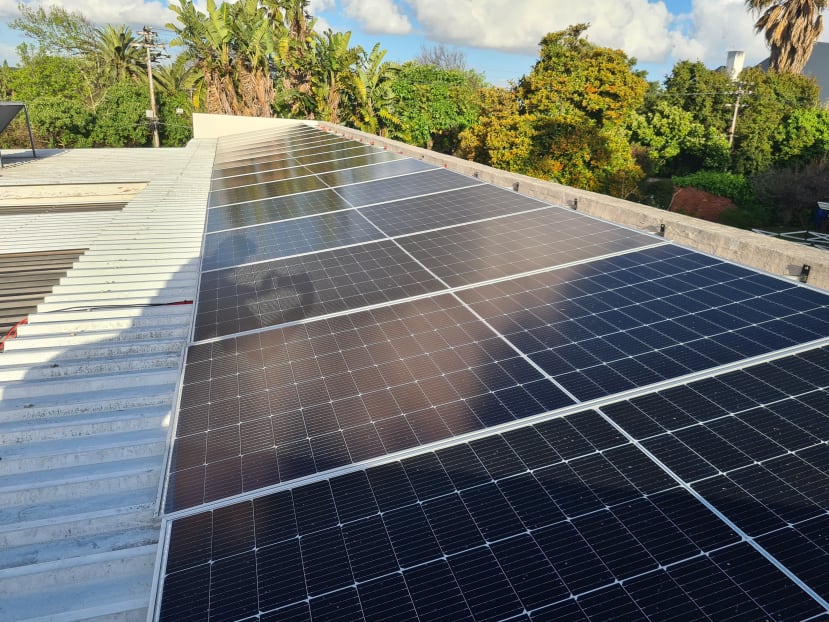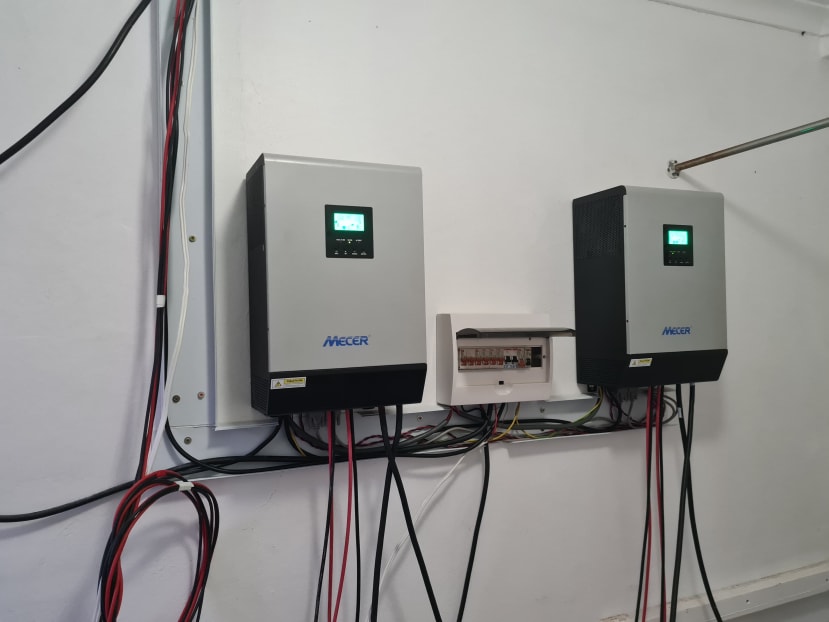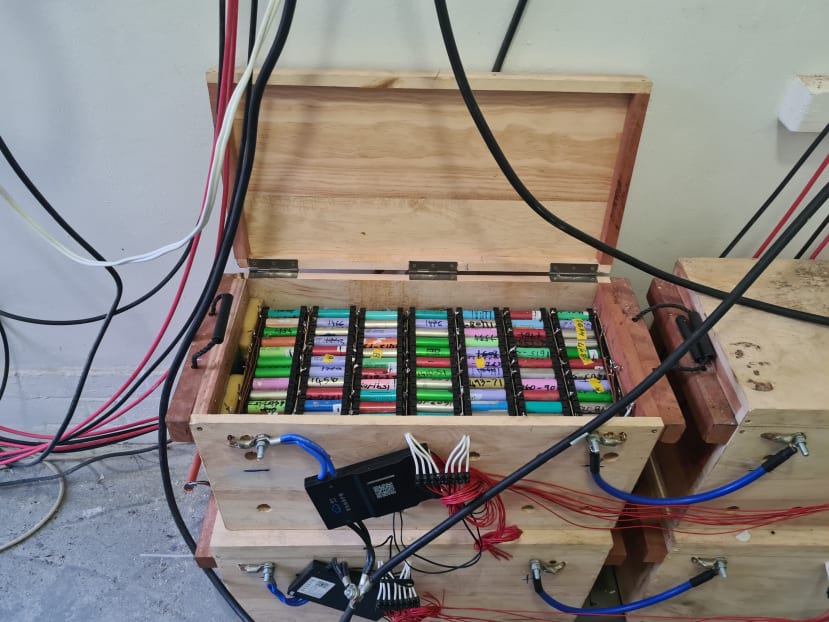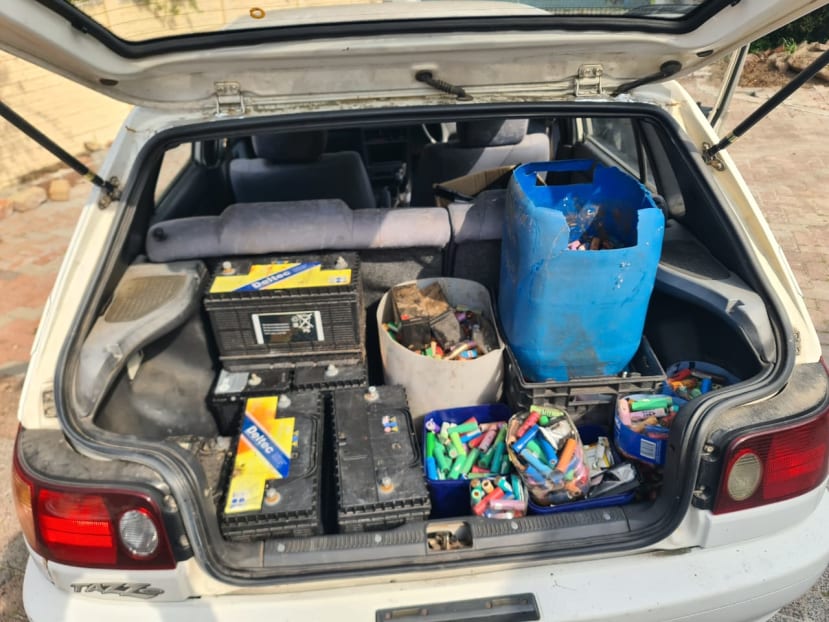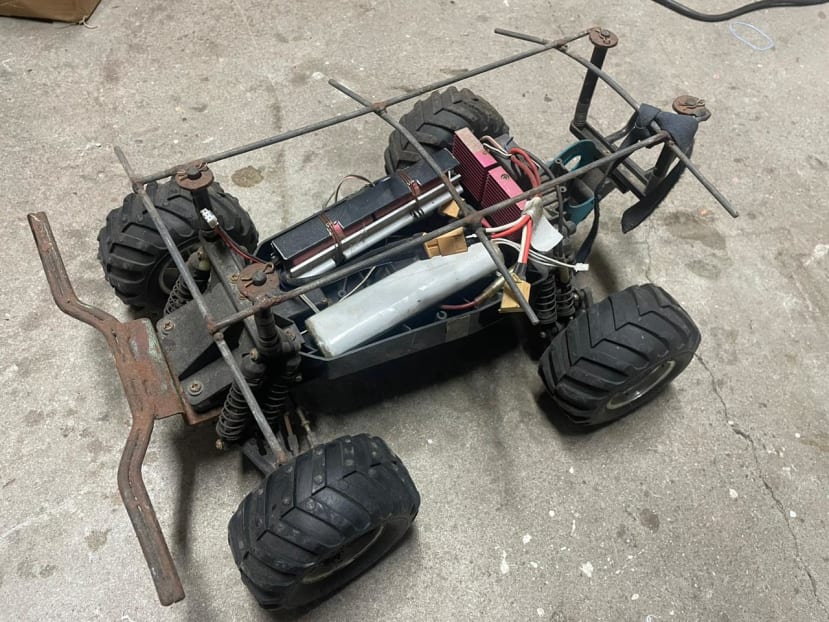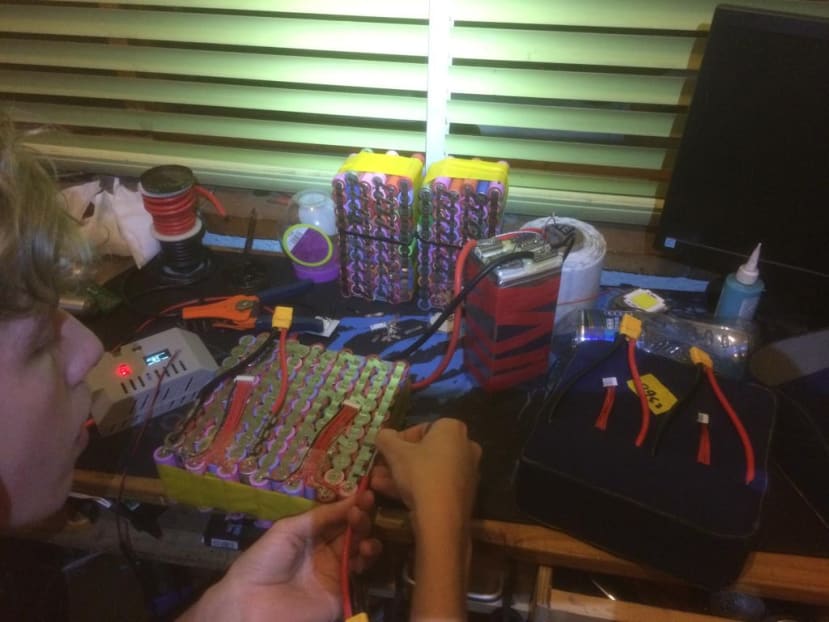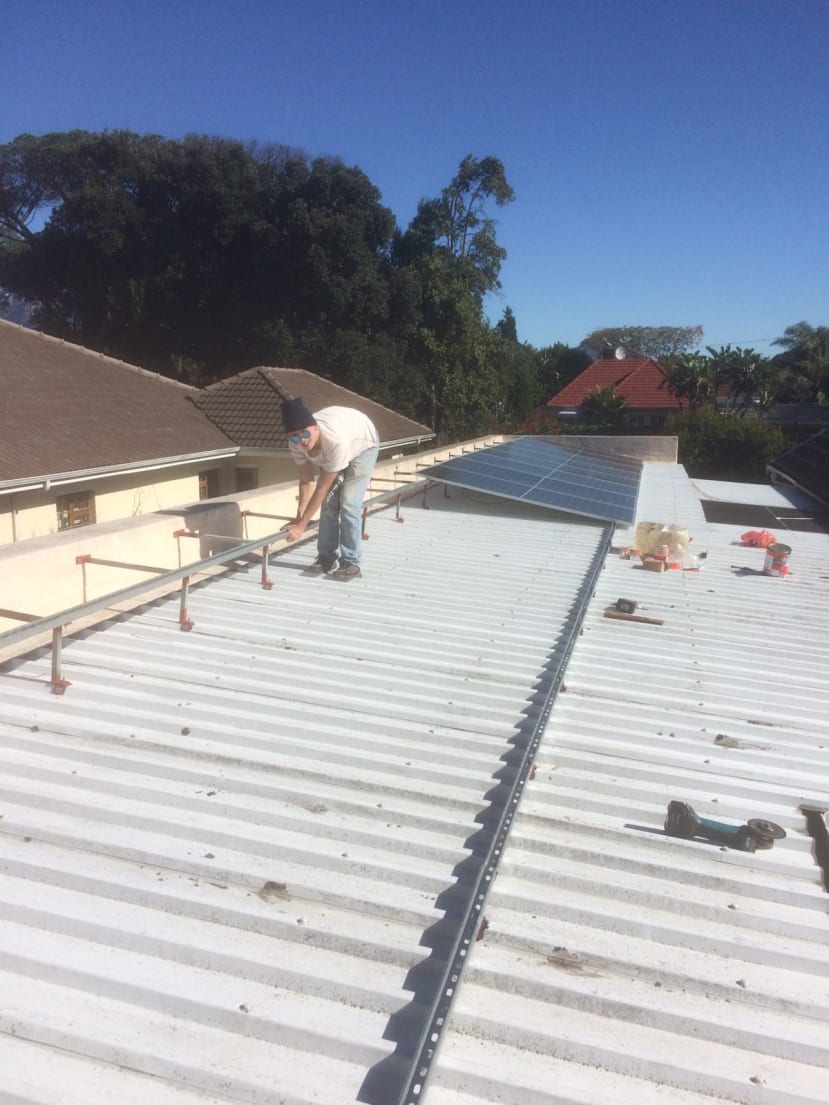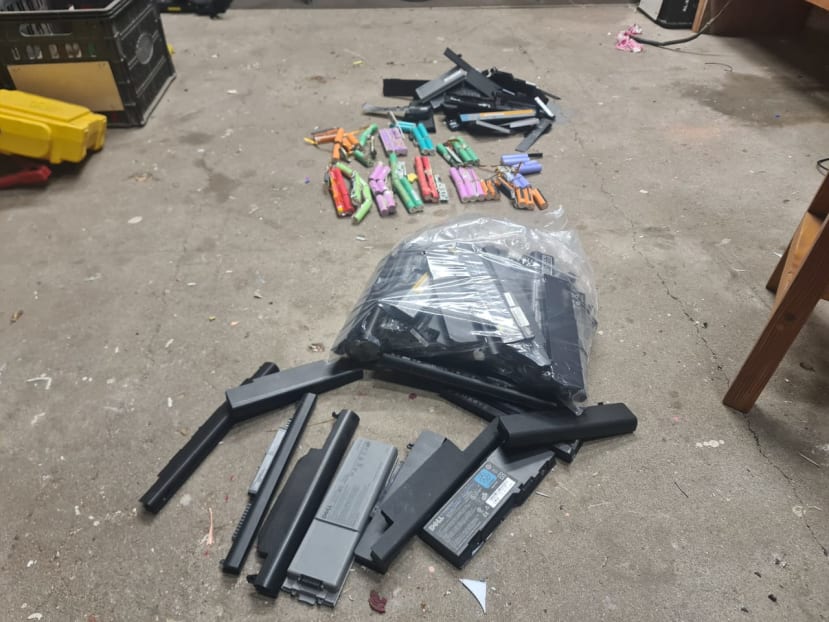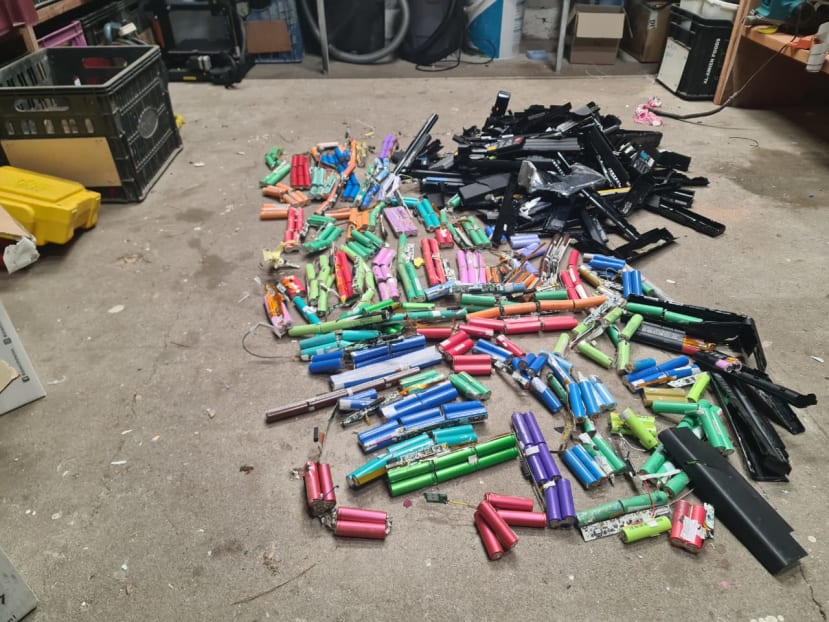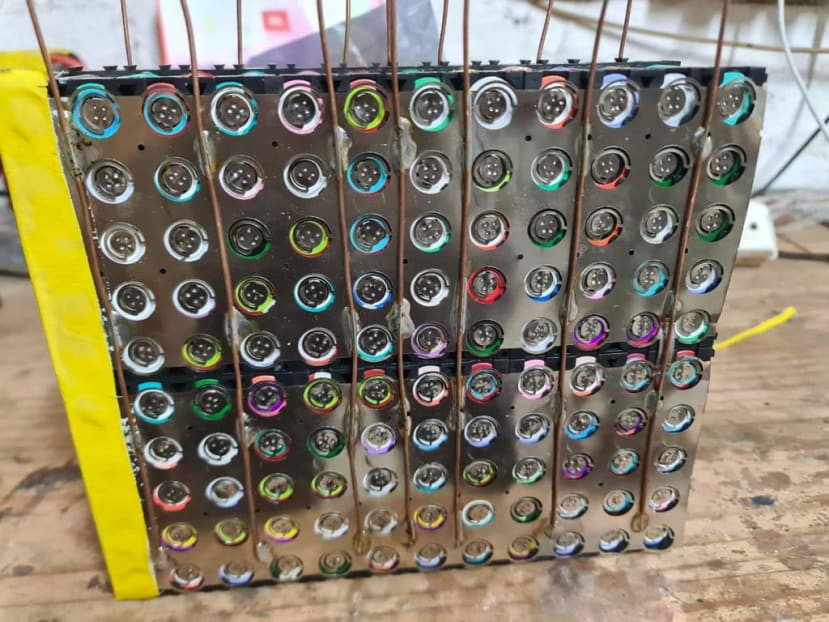E-waste solar power storage systems for the sustainable future
Follow projectHow do you feel about this article? Help us to provide better content for you.
Thank you! Your feedback has been received.
There was a problem submitting your feedback, please try again later.
What do you think of this article?
 My competition entry in nature positive/environmental category.
The e-waste solar power storage system for a sustainable future.
This design was a product of a lifetime passion and hobby I have had in electronics, innovation and recycling.
My competition entry in nature positive/environmental category.
The e-waste solar power storage system for a sustainable future.
This design was a product of a lifetime passion and hobby I have had in electronics, innovation and recycling.
Parts list
| Qty | Product | Part number | |
|---|---|---|---|
| 16 | 550W solar panels | ||
| 200 | Solar cable pm | ||
| 32 | Solar cable connectors | ||
| 50 | Solar panel mounting brackets | ||
| 14 | Solar panel rails | ||
| 3 | 48v bms module | ||
| 5040 | 18650 lithium battery | ||
| 5040 | Fused tabing wire | ||
| 5040 | Battery holder | ||
| 3 | wooden battery box | ||
| 1 | Assorted hardware | ||
| 8 | Breakers | ||
| 2 | 5kw hybrid solar inverter | ||
| 64 | solar panel safety clip | ||
1 - Introduction to a solar system
A solar power system is a sophisticated assembly designed to harness, convert, store, and utilize solar energy efficiently. The four main components of a solar system are Solar Panels, Solar Controller (MPPT) + Inverter, Lithium Batteries, and 220V Mains Electrical Supply. Each component plays a pivotal role in ensuring the optimal functionality of the entire system.
Detailed Description:
1. Solar Panels:
Solar panels are cells strategically positioned to capture maximum sunlight, typically facing due north at a 30-degree angle above level. They are positioned to minimize shadow interference throughout the day, converting solar energy into electrical energy through the photoelectric effect. The positioning of these panels are crucial for maximizing energy conversion efficiency.
2. Solar Controller (MPPT) + Inverter:
The Maximum Power Point Tracker (MPPT) is integral to the solar controller, optimizing the energy harvested from the solar panels by adjusting the electrical conversion settings to ensure maximum efficiency. The inverter converts the direct current (DC) produced by the solar panels into alternating current (AC), which is suitable for household appliances. Together, they balance and regulate the power supply and demand, ensuring the system’s reliability and efficiency.
3. Batteries:
Lithium batteries store the electrical energy generated by the PV panels. Known for their greater efficiency and reliability, compared to lead acid batteries. These batteries consist of multiple individual cells managed by a Battery Management System (BMS). The BMS maintains uniform voltage during charging and discharging cycles and incorporates safety features to protect against overcharging and over-discharging, ensuring the longevity and safety of the battery system.
4. 220V Mains Electrical Supply:
While not essential, most domestic solar systems integrate a 220V mains electrical supply to compensate for periods of low solar energy availability or when the batteries are depleted. In places like South Africa, where power outages are frequent, solar systems must be meticulously programmed to switch to mains power supply before battery depletion, preserving enough battery power to maintain constant electrical supply during blackouts. Some systems are grid-tied, allowing the return of excess electricity to the electrical grid, providing financial credit to the supplier.
Electrical Activity Description:
Solar panels absorb the sun’s rays, typically generating around 500 to 600W and 45 Volts per panel. The energy production is contingent on daylight availability and is reduced during overcast days. Cables, connected in series and parallel configurations depending on the number of panels and inverter specifications, typically carry 90V and 25 Amps to the solar controller/inverter. Here, the balance between power supply and demand is meticulously maintained, ensuring optimal energy utilization and storage.
Conclusion:
A solar power system is a synergistic integration of various components, each crucial for harnessing, converting, optimizing, and storing solar energy. In regions with prevalent electrical shortages, such as South Africa, the strategic configuration and management of solar systems are imperative for ensuring uninterrupted power supply and maximizing the benefits of solar energy. The continuous advancements in solar technology and its strategic implementation are pivotal for addressing energy-related challenges and fostering a sustainable and energy-efficient future.
2 - My Entry in The Category: Nature Positive/ Environmental
Introduction:
The solar project I am undertaking is not just an innovative solution to energy problems but also a beacon of sustainable development and economic growth. It aligns with the United Nations Sustainable Development Goals, specifically addressing Goal 7 – Affordable and Clean Energy, Goal 8 – Decent Work and Economic Growth and Goal 9- industry, innovation and infrastructure. This project demonstrates the power of sustainable innovations in creating environmental conservation and socio-economic development.
Addressing SDG 7 – Affordable and Clean Energy:
This solar power system epitomizes sustainability and affordability. Once set up, it generates electricity at no cost, offering a reliable energy solution that can operate in conjunction with a fully functional mains supply, erratic main supply, or entirely off-grid. Unlike conventional energy sources reliant on unsustainable and environmentally detrimental fossil fuels, this solar system leveraged clean and renewable solar energy, reducing further environmental degradation and contributing to the fight against climate change.
Environmental Impact:
The project goes beyond just producing clean electricity; it also addresses environmental conservation by preventing the disposal of harmful lithium-ion cells. By re-purposing these cells, the project averts further environmental damage, reinforcing its commitment to a cleaner and more sustainable planet. E-waste build-up is a global problem that is constantly getting worse. Recycling lithium batteries targets a particularly toxic component of e-waste and greenhouse gas emissions.
Addressing SDG 8 – Decent Work and Economic Growth:
The process of sourcing, stripping, testing, and reassembling lithium-ion batteries needs a diverse workforce, creating employment opportunities for various skill levels, from basic labourers to skilled technicians. This project is not just about harnessing clean energy but also about empowering communities by providing decent work opportunities.
Economic Impact:
The establishment of a national network for lithium-ion battery sourcing across South Africa could supply high volumes of raw material, supporting a substantial industry and contributing significantly to the country’s economic growth. By creating an industry around sustainable energy solutions. This innovative project has the potential for economic development
Conclusion:
This solar project is a multifaceted initiative aimed at achieving sustainable development, environmental conservation, and economic growth. By aligning with the United Nations Sustainable Development Goals, it demonstrates the potential of sustainable innovations in creating a more equitable and sustainable world. The project is not just a stride towards clean and affordable energy but also a step towards creating decent work opportunities and promoting economic growth, making it a cornerstone for sustainable development in South Africa.
Future Implications:
The implementation of this project sets up for a sustainable future, where innovations in clean energy can drive economic growth and job creation, contributing to a balanced and inclusive development model. It serves as a blueprint for leveraging sustainable technologies to address pressing global challenges, paving the way for a world where environmental conservation and economic growth coexist harmoniously.
3 - Title: E-Waste Solar Power Storage System: For a Sustainable Future
Introduction:
South Africa is a land of abundant sunlight and untapped potential, yet it is plagued by frequent electrical shortages, high unemployment rates, and inadequate E-waste recycling infrastructure. These challenges, however, present a perfect opportunity for innovative solutions that can address both local and global issues, fostering sustainability and economic growth. The E-Waste Solar Power Storage System is a pioneering initiative aimed at utilizing South Africa's abundant solar energy and available labour to create a sustainable future.
Local Challenges:
-
Electrical Shortages: Daily power cuts have necessitated the adoption of inverter backup systems in households and businesses, emphasizing the urgent need for sustainable energy solutions. The high levels of daily rolling blackouts experienced by South Africa cause massive battery failure in the standard deep cycle battery systems, as they don’t cope with this high cycle rate of charging and discharging as well as lithium batteries do.
-
High Unemployment Rate: The high unemployment rate provides a readily available workforce for E-waste recycling and battery manufacturing, offering a solution to labour-intensive industries.
-
Inadequate E-Waste Recycling Infrastructure: The lack of proper recycling facilities results in significant wastage of valuable recyclable resources and increased environmental degradation due to landfill overflow.
-
Entrepreneurial Opportunities: The government is supporting entrepreneurial initiatives to bolster the economy through local and international trade and employment creation.
International Challenges:
-
Global E-Waste Accumulation: There is a serious global build-up of E-waste, emphasizing the need for innovative recycling solutions.
-
Global Electrical Shortage: Several countries are experiencing rolling blackouts, with more to follow as we face a universal electrical shortage and the need for sustainable energy solutions.
-
Unemployment Issues: Many countries face unemployment problems, and the labour-intensive process of sourcing and processing lithium batteries can provide substantial employment opportunities globally.
My Journey:
My journey began at the age of around seven, where my fascination with electronics led me to dismantle and rebuild my electronic gifts. An example was stripping my fancy remote-controlled car and rebuilding it as a remote-controlled fishing rod. This passion evolved into more complex projects, such as motorizing go-kart with components from recycled electronics and powering them from old alarm batteries I got from my local supermarkets recycle bin. After purchasing my first few broken laptop batteries from a local flea market, I started converting old broken nitro rc cars into high-performance lithium iron powered vehicles with brushless motors. My endeavours also included the construction of high-speed electric skateboards, powered by lithium-ion cells from old laptop batteries, capable of reaching speeds up to 80 km/h.
The Turning Point:
The frequency of power cuts in South Africa known as load shedding increased considerably. This caused my basic home inverter system with deep cycle batteries to fail and I was unable to continue with my 3D printing projects that were funding my electronic hobbies and projects.
The Project: E-Waste Solar Power Storage System
This initiative aims to harness the abundant solar energy in South Africa, coupled with the labour availability due to high unemployment rates, to create a sustainable power storage system utilizing recycled E-waste. This project not only addresses the local challenges of electrical shortages and unemployment but also contributes to solving the global issues of E-waste accumulation and electrical shortages.
Project Details:
-
Solar Integration: The project will leverage South Africa's sunny weather to develop efficient solar electrical supply systems, providing a reliable source of energy.
-
Labour Utilization: The project will employ the local workforce for E-waste recycling and battery manufacturing, providing employment opportunities and stimulating the local economy.
-
E-Waste Recycling: The initiative will focus on developing robust E-waste recycling infrastructure to recover valuable resources, reducing environmental impact and landfill usage and the emission of greenhouse gases.
-
Sustainable Energy Solutions: The project will create reliable and sustainable energy storage solutions to mitigate the effects of frequent power cuts and contribute to global energy sustainability.
Conclusion:
The E-Waste Solar Power Storage System is a holistic solution designed to address the multifaceted challenges of our time. By utilizing local resources and addressing both local and global issues, this initiative is a step towards a more sustainable future, paving the way for a brighter, more sustainable tomorrow.
Next Steps:
I am eager to share more intricate details about the E-Waste Solar Power Storage System and explore how this initiative can be scaled and implemented to make a significant impact locally and globally spreading a new era of sustainable innovation and development. This challenge and the fact that I had a large number of lower-powered lithium-ion batteries available that were not strong enough to power my cars and skateboards. This pushed me to research and construct my first 10kwh 48v lithium battery. I connected it up initially with my inverter and our inconsistent mains supply, this allowed my projects to continue. I then built and connected more batteries, purchased another inverter and solar panels. I had now created a high-power off-grid solar system.
My Personal Solar System
I installed two sets of 20-meter rails on the garage roof using custom-made brackets. I attached 16 solar panels to these rails using anti-theft clips. These solar panels are linked with 6mm insulated single-core electrical cables, arranged in both series and parallel configurations, providing two sets of 4 panels to each inverter. Each cable set carries 90v at 25amps. The solar energy flows into the inverters, charging the batteries and delivering a 220v output. This setup powers various household needs, including lighting, the fridge, audio-visual appliances, and all electrical and 3D printing projects.
To assemble the batteries, I collect discarded lithium iron batteries and power tool batteries, dismantle them, and carefully extract and clean the cells, removing any adhesive and connecting cables. These cells are individually recharged and tested to determine their actual electrical capacity. I categorize the cells and then spot weld them together, using fused tabbing wire for safety.
For a 10kwh 48v battery, I create 14 sets of cells, each set containing 12×10 cells held in clipped-together plastic holders. These cells are tabbed together at the top and bottom to form a single large 3.6v battery unit. Each unit, consisting of 120 cells and providing 3.6v, has a capacity of around 200ah. I connect seven of these units in series within a wooden box. Each unit is insulated from the others using 4mm thick cement fibre panels. The dimensions of each wooden box are 300×300×600mm, and when fully loaded with batteries, it weighs 38kgs. A 10kwh battery comprises two of these battery boxes.
My system is linked to the main power supply and ensures a continuous power supply during our daily power outages.

